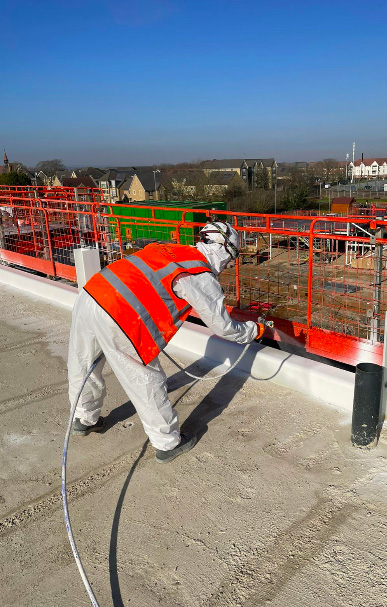Over the past decade, cavity barriers have played a significant role in limiting the spread of smoke and flames inside buildings, as well as the spread of flames to neighbouring properties. Cavity barriers are the unsung heroes of most passive fire protection systems. This is because they hardly make any noise or smell. But, when it comes to delivering on their purpose, they work with devastating efficiency. While cavity barriers may not perform a flashy job, these products are crucial for making your passive fire protection system effective. Therefore, they play an integral role in a passive fire protection project. Through this article, construction professionals can not only begin to understand the purpose of cavity barriers, but also the regulations that ensure they comply with industry-wide standards.
Defining A Cavity Barrier
A cavity is defined as an enclosed space made by the design and placing of a building’s structural elements. A few common examples include gaps between floors, walls, and ceiling voids. Such cavities are usually hidden, but they must be properly sealed as part of a structural fire protection strategy implemented by fire protection services UK.
The Principle Behind The Cavity Barriers
If there is any occurrence of a fire, the space between walls and floors can generate something called ‘air buoyancy’, a push-and-pull effect is resulted by differences in atmospheric temperature. Due to this the flames and smoke are enabled to swiftly transfer between within various compartments of a building, which is otherwise called the ‘chimney effect.’
The ascending flow of air, heat, smoke and flames also generates severe challenges for fire safety in high-rise buildings. A fire that is initiated on the ground floor and goes up through empty cavities can gather on higher levels, with no space for smoke and hot air to escape. Hence, cavities in the infrastructure must be adequately sealed.
Cavity barriers have an inherent mechanism of blocking the passage of fire within cavities. These are created from either intumescent (which expand in high temperatures to create a protective seal) or fire-resistant materials. Through the containment of the spread of fire to a single area, the passive fire protection tools can reduce large-scale damage whilst also leaving a window of time for a building to be safely evacuated.
Correct Installation Of Passive Fire Protection Elements
Cavity barriers should be installed by a professional fire protection agency UK. The placement should be done near the edges of internal cavities. For example, window and door openings or extract vents. They should also be placed at junctions whenever the wall cavity is aligned with a building compartment wall or floor. You have to be mindful of some exceptions to this requirement though. They are dependent on how fire-resistant the building material actually is. Cavity walls of a specific material or thickness may not need additional cavity barriers placed at junctions.
According to the rules and regulations, cavity barriers should be installed near the edges of internal cavities, such as window and door openings or extract vents. They should also be placed at junctions whenever the wall cavity is aligned with a building compartment wall or floor. There are some exceptions to this requirement, depending on how fire-resistant the building material is. Cavity walls of a specific material or thickness may not require additional cavity barriers placed at junctions.
Regular Inspection Of The Cavity Barriers
Whenever a new construction or building project is initiated, the installation of cavity barriers will be incorporated into the process by construction managers and site teams through a fire protection agency. But, when executing the works on older infrastructure, it’s essential to keep in mind that it may have been constructed before the recent requirements were put into effect. Therefore it’s vital to carry out a thorough check of a building’s compartmentation and fireproofing features like fire doors and cavity barriers.
During the installation of cavity barriers, it’s crucial to document all locations and maintenance information to be recorded in the building’s fire safety manual. Infrastructure regulations need records of fire barrier installations, including illustrations of the particular location and specifications of cavity barriers situated in all compartment walls and doors. The well-maintained records can be used to inform cavity barrier inspection and maintenance with the best fire protection services in the UK.

